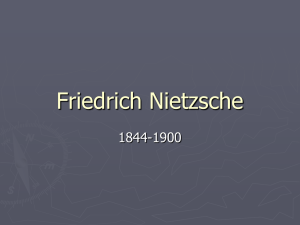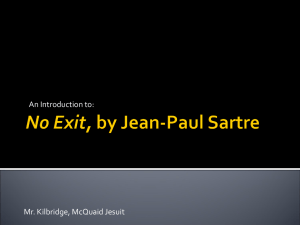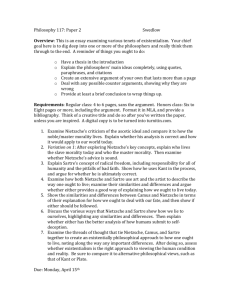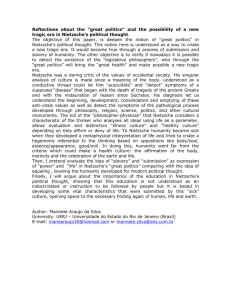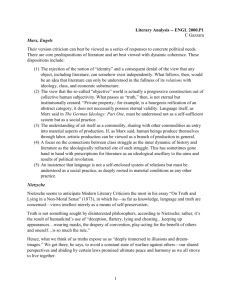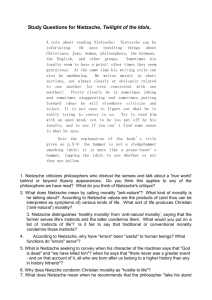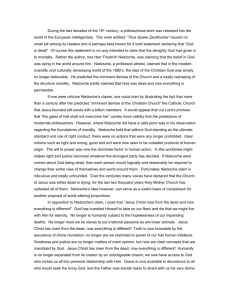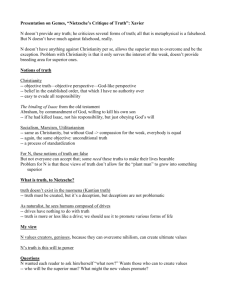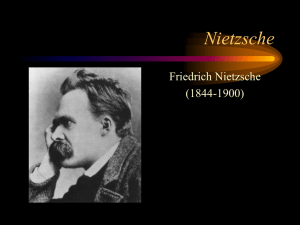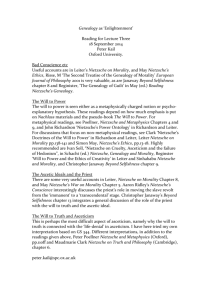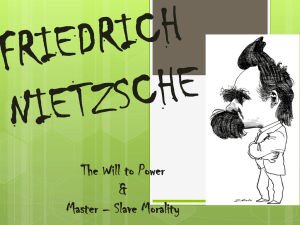Eric v.d. Luft - University of Warwick
advertisement
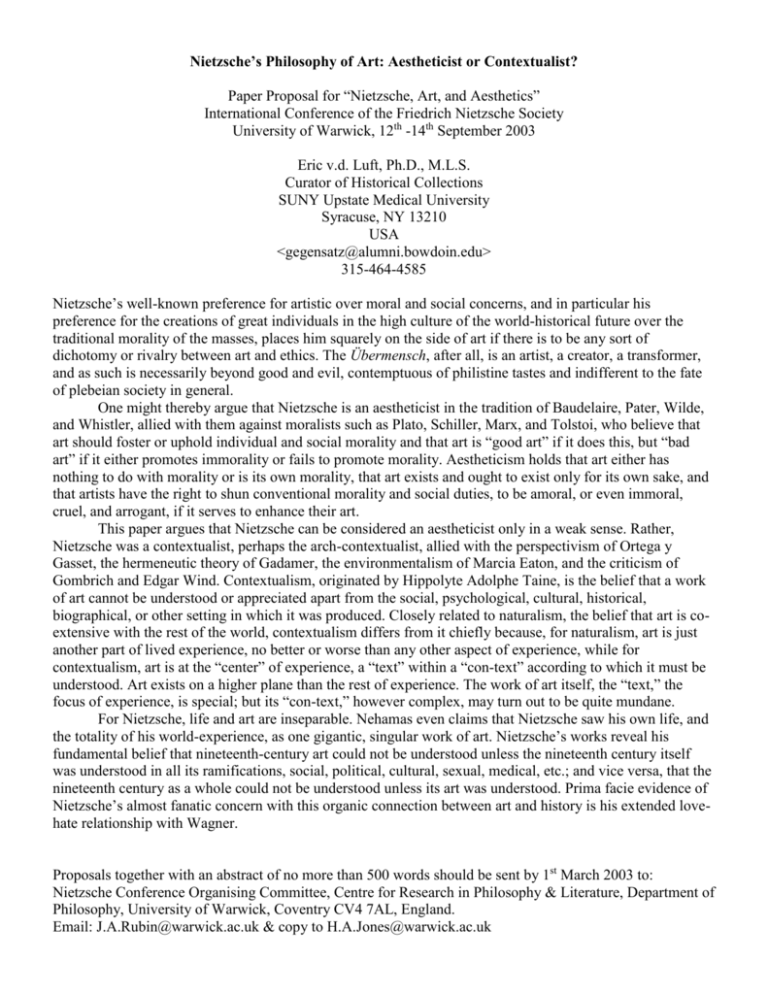
Nietzsche’s Philosophy of Art: Aestheticist or Contextualist? Paper Proposal for “Nietzsche, Art, and Aesthetics” International Conference of the Friedrich Nietzsche Society University of Warwick, 12th -14th September 2003 Eric v.d. Luft, Ph.D., M.L.S. Curator of Historical Collections SUNY Upstate Medical University Syracuse, NY 13210 USA <gegensatz@alumni.bowdoin.edu> 315-464-4585 Nietzsche’s well-known preference for artistic over moral and social concerns, and in particular his preference for the creations of great individuals in the high culture of the world-historical future over the traditional morality of the masses, places him squarely on the side of art if there is to be any sort of dichotomy or rivalry between art and ethics. The Übermensch, after all, is an artist, a creator, a transformer, and as such is necessarily beyond good and evil, contemptuous of philistine tastes and indifferent to the fate of plebeian society in general. One might thereby argue that Nietzsche is an aestheticist in the tradition of Baudelaire, Pater, Wilde, and Whistler, allied with them against moralists such as Plato, Schiller, Marx, and Tolstoi, who believe that art should foster or uphold individual and social morality and that art is “good art” if it does this, but “bad art” if it either promotes immorality or fails to promote morality. Aestheticism holds that art either has nothing to do with morality or is its own morality, that art exists and ought to exist only for its own sake, and that artists have the right to shun conventional morality and social duties, to be amoral, or even immoral, cruel, and arrogant, if it serves to enhance their art. This paper argues that Nietzsche can be considered an aestheticist only in a weak sense. Rather, Nietzsche was a contextualist, perhaps the arch-contextualist, allied with the perspectivism of Ortega y Gasset, the hermeneutic theory of Gadamer, the environmentalism of Marcia Eaton, and the criticism of Gombrich and Edgar Wind. Contextualism, originated by Hippolyte Adolphe Taine, is the belief that a work of art cannot be understood or appreciated apart from the social, psychological, cultural, historical, biographical, or other setting in which it was produced. Closely related to naturalism, the belief that art is coextensive with the rest of the world, contextualism differs from it chiefly because, for naturalism, art is just another part of lived experience, no better or worse than any other aspect of experience, while for contextualism, art is at the “center” of experience, a “text” within a “con-text” according to which it must be understood. Art exists on a higher plane than the rest of experience. The work of art itself, the “text,” the focus of experience, is special; but its “con-text,” however complex, may turn out to be quite mundane. For Nietzsche, life and art are inseparable. Nehamas even claims that Nietzsche saw his own life, and the totality of his world-experience, as one gigantic, singular work of art. Nietzsche’s works reveal his fundamental belief that nineteenth-century art could not be understood unless the nineteenth century itself was understood in all its ramifications, social, political, cultural, sexual, medical, etc.; and vice versa, that the nineteenth century as a whole could not be understood unless its art was understood. Prima facie evidence of Nietzsche’s almost fanatic concern with this organic connection between art and history is his extended lovehate relationship with Wagner. Proposals together with an abstract of no more than 500 words should be sent by 1st March 2003 to: Nietzsche Conference Organising Committee, Centre for Research in Philosophy & Literature, Department of Philosophy, University of Warwick, Coventry CV4 7AL, England. Email: J.A.Rubin@warwick.ac.uk & copy to H.A.Jones@warwick.ac.uk
